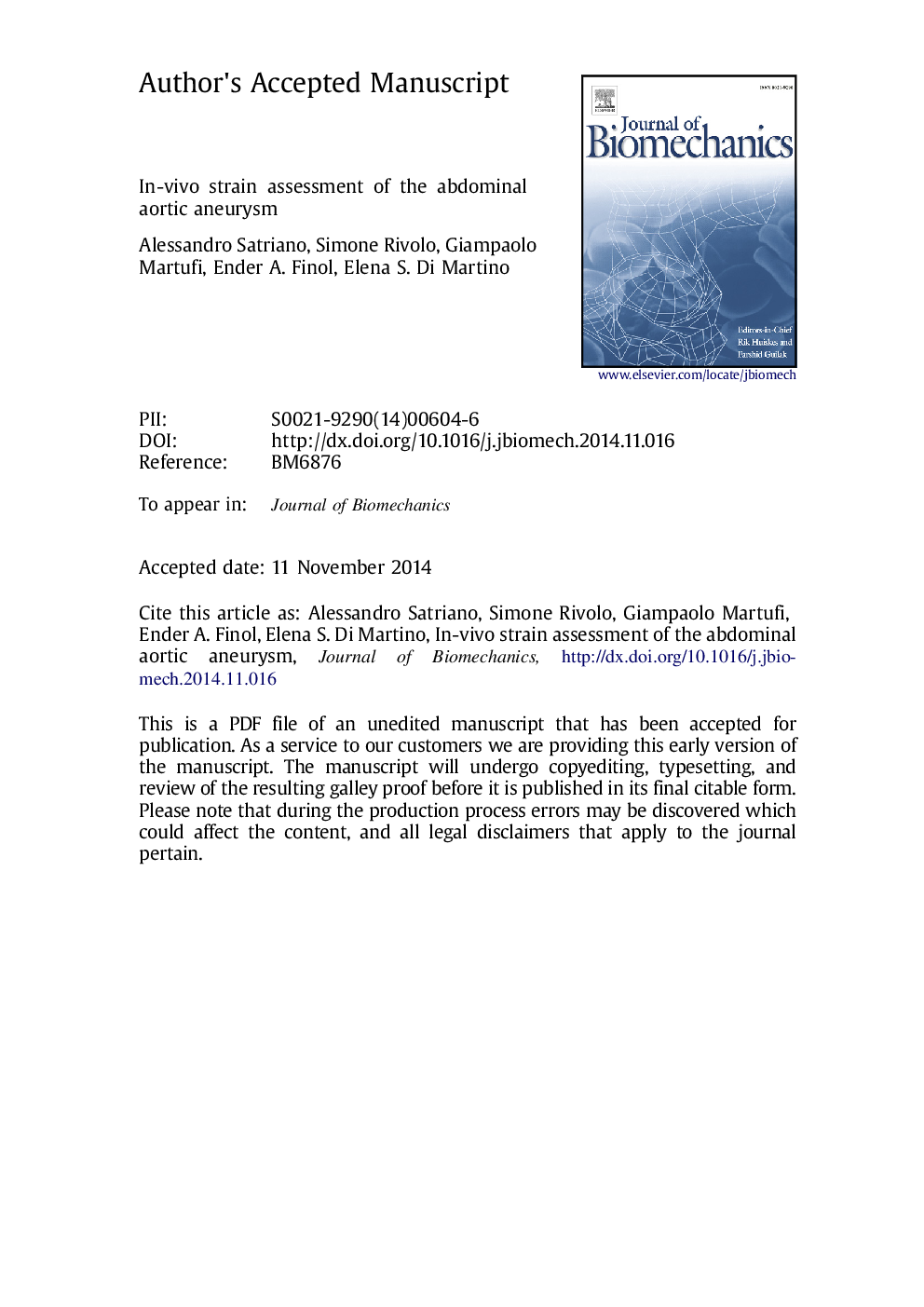| Article ID | Journal | Published Year | Pages | File Type |
|---|---|---|---|---|
| 10431630 | Journal of Biomechanics | 2015 | 29 Pages |
Abstract
The only criteria currently used to inform surgical decision for abdominal aortic aneurysms are maximum diameter (>5.5cm) and rate of growth, even though several studies have identified the need for more specific indicators of risk. Patient-specific biomechanical variables likely to affect rupture risk would be a valuable addition to the science of understanding rupture risk and prove to be a life saving benefit for patients. Local deformability of the aorta is related to the local mechanical properties of the wall and may provide indication on the state of weakening of the wall tissue. We propose a 3D image-based approach to compute aortic wall strain maps in vivo. The method is applicable to a variety of imaging modalities that provide sequential images at different phases in the cardiac cycle. We applied the method to a series of abdominal aneurysms imaged using cine-MRI obtaining strain maps at different phases in the cardiac cycle. These maps could be used to evaluate the distensibility of an aneurysm at baseline and at different follow-up times and provide an additional index to clinicians to facilitate decisions on the best course of action for a specific patient.
Related Topics
Physical Sciences and Engineering
Engineering
Biomedical Engineering
Authors
Alessandro Satriano, Simone Rivolo, Giampaolo Martufi, Ender A. Finol, Elena S. Di Martino,
